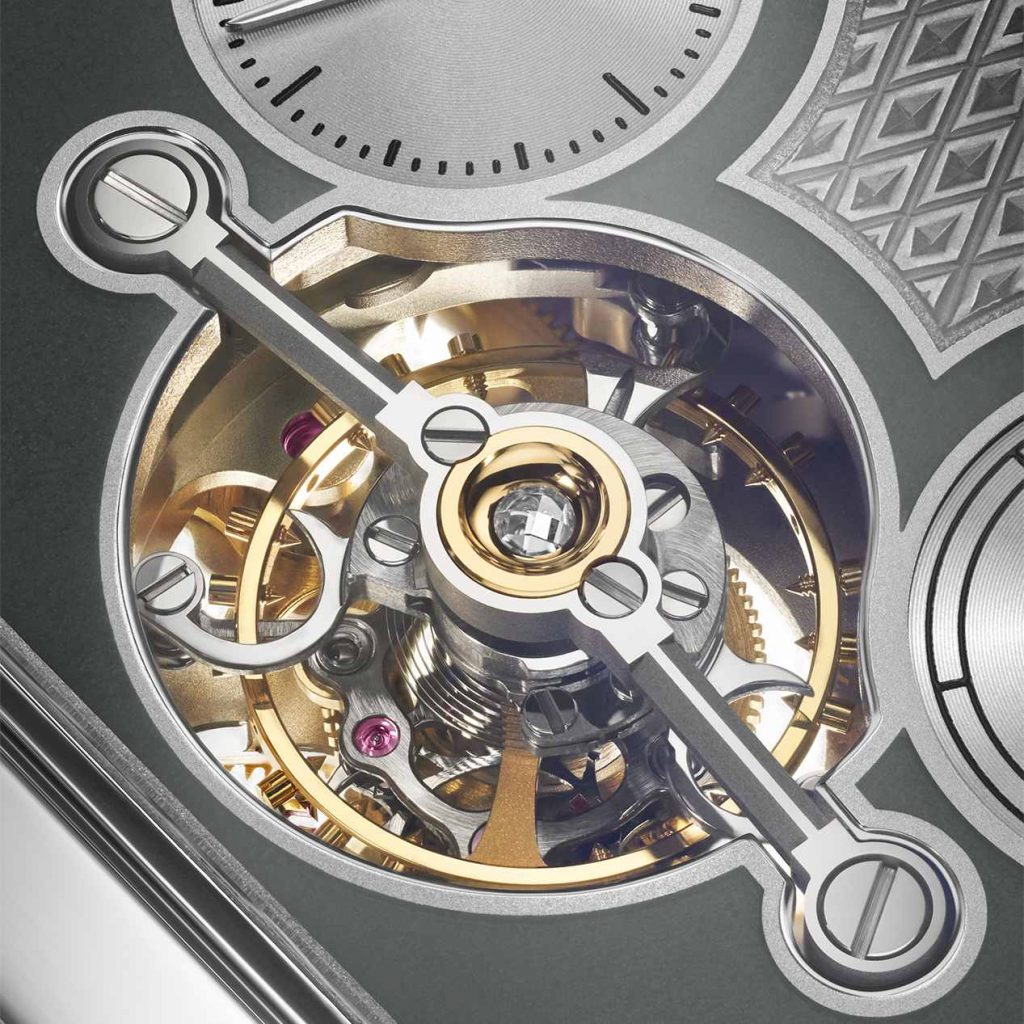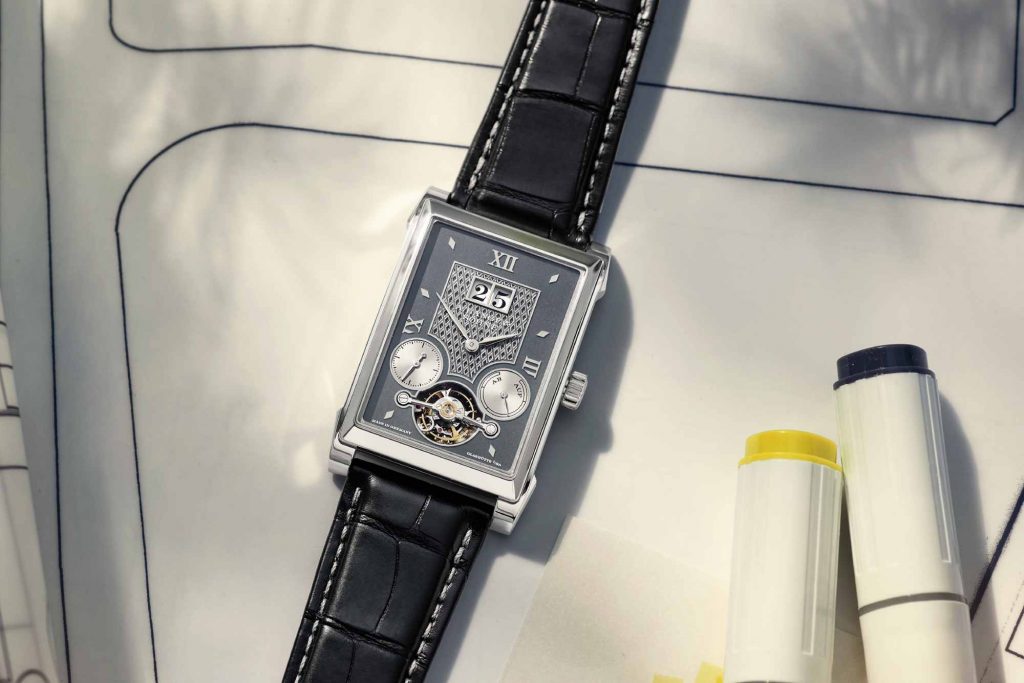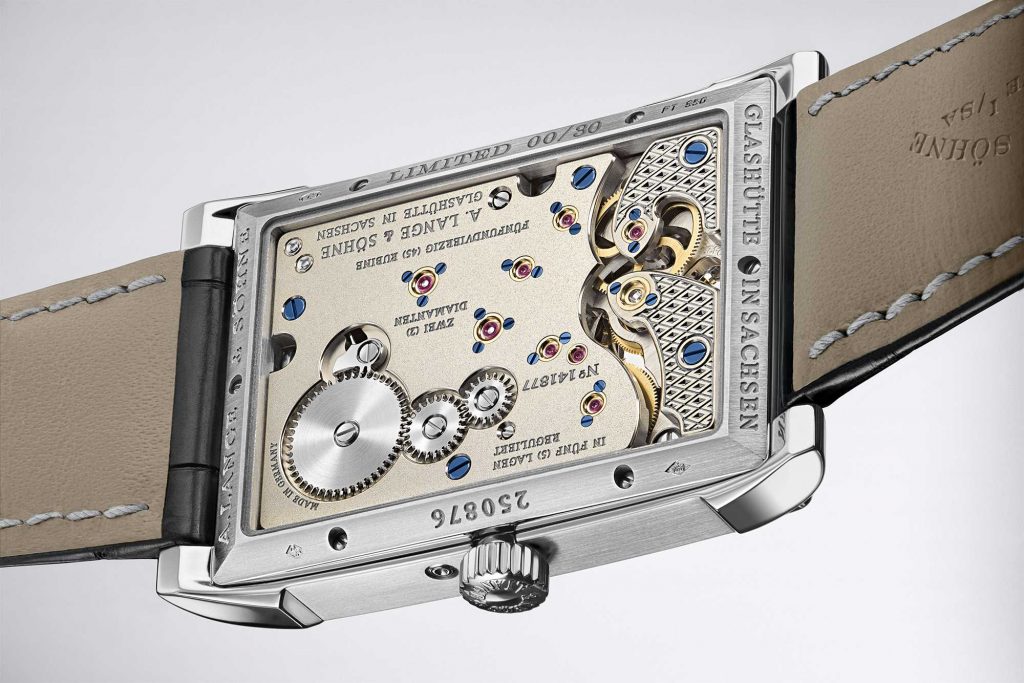When the A. Lange & Söhne Cabaret Tourbillon was unveiled in 2008, it was the world’s first tourbillon to be equipped with a stops-seconds mechanism in the form of a Y-shaped lever. Prior to that, it was impossible to precisely set a tourbillon watch as the balance is housed in a rotating cage, which would obstruct a regular brake lever from landing on the balance. However, for all its uniqueness, being a form movement with a hacking tourbillon, the Cabaret Tourbillon never quite caught on, coming off the catalogue just three years later.

This year Lange revisits this milestone model with a Handwerkskunst limited edition of 30 pieces. The watch is mechanically identical to the discontinued model but features a fired enamel dial along with a hand-engraved lozenge pattern on dial center as well as the movement.
A Medley of Decorative Techniques

Made of solid white gold, the dial is extremely complex, with a contrast of textures incorporating a variety of decorative finishing. The middle section of the dial is rhodium-plated and engraved with a lozenge pattern, echoing the lozenge hour markers while the outer section is grained, creating a distinctive contrast. Additionally, a thin line of tremblage engraving, which produces a fine, granular texture, frames the big date as well as dial middle.

The hour markers as well as roman numerals are also engraved in relief, and finally the entire dial is topped with a transparent enamel layer, which creates an interesting effect, being engraved and grained yet glossy on the surface.
In keeping with the monochromatic scheme of the dial, the integrated sub-dials as well as hands are all made of rhodium-coloured gold.
Form Factor
Rendered in platinum, the case is substantial in size, measuring 39.2 mm by 29.5 mm and 10.3 mm high. It features a distinctive art deco design with protruding lugs and an angular, double stepped bezel. It is predominantly polished, punctuated with a satin-finished case middle.

Inside is a hand-wound form movement, the calibre L042.1 – the same movement that was used in the discontinued model. It is equipped with double barrels that offer a 120-hour power reserve, which is no doubt a reflection of the decade’s quest for lengthy power reserves when it was launched in 2008. Its long power reserve is all the more impressive given the need to power the tourbillon as well as the outsized date mechanism and was accomplished by the sheer size of the movement.
The stop-seconds mechanism for the tourbillon incorporates a Y-shaped lever that pivots to embrace the cage when the crown is pulled out, thus stopping its rotation. One other unusual aspect of the movement is that the constant seconds counter is directly driven by the going train while the tourbillon is driven by an intermediate wheel. The reverse is typically more common, but perhaps this proves to be a more optimal solution for its unusual dial layout where the constant seconds is located at eight o’clock rather than in the center. The balance wheel is also free sprung, which is a more advanced system in which the hairspring is fixed, and the rate is adjusted by tightening or loosening the screws affixed to the balance wheel.

Visible through the case back, the three-quarter plate made of German silver has a frosted finish instead of the usual ribbing while the cocks for the tourbillon and intermediate wheel have been hand-engraved with the same lozenge pattern.


